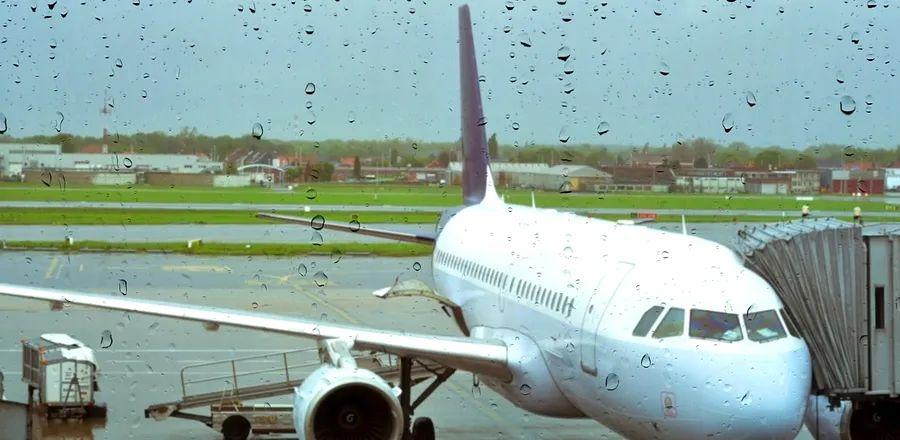These Weather Conditions Are Most Likely to Result in Flight Cancellations or Delays

Numerous factors can lead to flight delays or cancellations, ranging from crew illnesses to animals wandering onto the runway. Yet, the predominant cause is often weather-related.
The FAA reports that over 75 percent of all air traffic delays lasting 15 minutes or longer are due to weather issues, including low visibility, hail, high winds during takeoff, and thunderstorms.
Nonetheless, not all weather conditions have the same level of impact on travel. The severity of the weather and its location play significant roles in determining its effect. Here’s what you need to know about how weather can influence your travel plans.
Who is responsible for deciding to cancel or delay a flight because of weather conditions?
As explained by Jennifer Stroozas, the warning coordination meteorologist at the Aviation Weather Center (AWC), a government entity associated with the National Weather Service, the process for determining flight delays or cancellations due to weather is a joint effort. The AWC, the Federal Aviation Administration (FAA), and individual airlines collaborate in a three-party system to address weather threats that may impact air traffic. However, the ultimate decision regarding cancellations at a specific airport rests with that airport.
The process begins at the AWC headquarters in Kansas City, Missouri. This organization, staffed with skilled meteorologists, is tasked with analyzing weather conditions, forecasting potential hazards, and issuing advisories. These advisories are then forwarded to the FAA Command Center in Warrenton, Virginia.
"We have meteorologists on-site providing weather updates, informing the FAA about its current location, development, and anticipated movement," said Stroozas. "It’s an intriguing balance between us gathering aviation-specific weather hazard information and our FAA partners utilizing that data to determine the next steps."
According to the FAA, this process includes rerouting "aircraft away from hazardous weather and potentially delaying flights scheduled to land at or take off from airports affected by severe weather conditions."
Stroozas noted that many airlines employ their own meteorologists, who also coordinate with the FAA and AWC to share their findings. "There’s a significant amount of collaboration occurring daily to ensure passengers reach their destinations safely," she remarked.
Which weather conditions have the greatest impact on aircraft?
Thunder and lightning frequently lead to flight delays, particularly during the summer months.
"Thunderstorms and airplanes don't mix well, so efforts are made to keep them apart," Stroozas explained. She noted that these storms can result in severe turbulence, and if hail is present, it could potentially harm the aircraft.
Winter storms also pose significant challenges. Snow and ice can build up on runways, making it unsafe for aircraft to take off or land. Moreover, planes operating in freezing temperatures often require de-icing prior to departure, which can cause considerable delays.
"Icing on the aircraft can alter its aerodynamics and be quite hazardous," Stroozas remarked. She further pointed out that turbulence is more prevalent in winter, as that is when the jet stream tends to be more active.
Hurricanes and tropical storms pose significant challenges for air travel due to strong winds, heavy rainfall, and flooding. Similarly, dense fog can reduce visibility, complicating safe landings and takeoffs for pilots.
"Often, weather forces us to find ways to maintain some level of air traffic while navigating around hazards," Stroozas noted. This often results in longer flight paths, causing planes to arrive late and triggering a cascade of delays for subsequent flights.
Does your location matter?
Even if the skies are clear where you are, a major storm in busy airspace can lead to disruptions nationwide. This was the case on June 26, 2023, when severe storms swept through the Northeast, resulting in over 11,000 flight delays and cancellations in just one day. In extreme weather conditions, airports may completely shut down, leading to widespread cancellations.
"The impact of a weather event can sometimes hinge on its location," Stroozas explained. "Any adverse weather at an inconvenient time and place can lead to significant disruptions."
Katy Nastro, a travel expert with Going, a platform for finding cheap flights, highlighted that even if your destination can handle certain weather, the flight still needs to take off. For instance, a chilly 30-degree day in Minnesota could disrupt operations in Charleston, as happened in January 2018. While planes are equipped with de-icing systems for midflight, runways present a different challenge. Airports in warmer regions often lack the necessary equipment to handle such weather, leading to significant operational issues.
In the event of severe storms or unusual weather, such as a snowstorm in a southern state, it's up to each airport to determine whether flights can proceed based on their available safety equipment.

1

2

3

4

5
Evaluation :
5/5